In the middle of Shandong Province, with an area of 5965 square kilometers, Zibo is a modern industrial city and the third largest city in Shandong.
As the birthplace of Qi culture and the origin of football, Zibo is a national historical and cultural city with a long history. It is also a major pottery and porcelain production city. The splendid past has left Zibo with a large number of cultural relics. You will like this city if you are a fan of culture and history.
Zibo has many attraction sites that can take you back to the past of this ancient city and probe into the folk culture cultivated on this land. As the ancient capital of Qi State, it is highly recommended to visit Qi Dynasty Memorial Museum in person to feel its old charm.
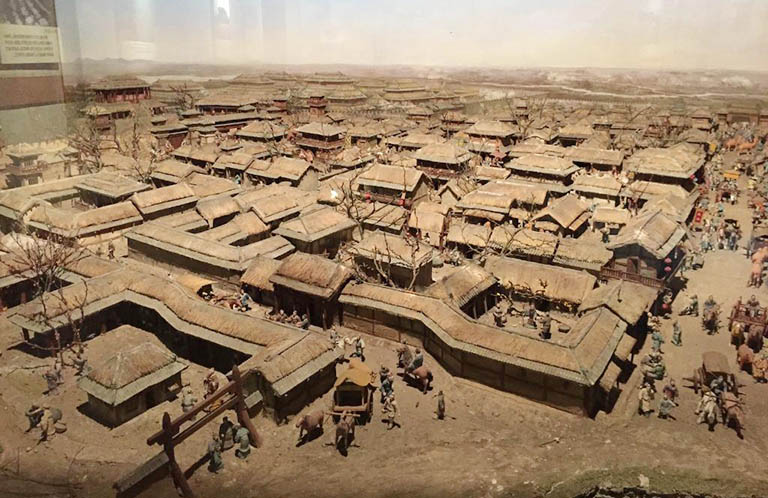
Having an area of 2,600 square meters, the Qi State (1044 B.C.-221 B.C) Memorial Museum is an ancient castle shaped building reconstructed from the ancient state of Qi cultural relics. It contains 15 exhibition halls and over 300 pieces of rare cultural relics and a lot of documents. All these relics show the culture of Qi and tell stories about how this kingdom was formed, developed and conquered.
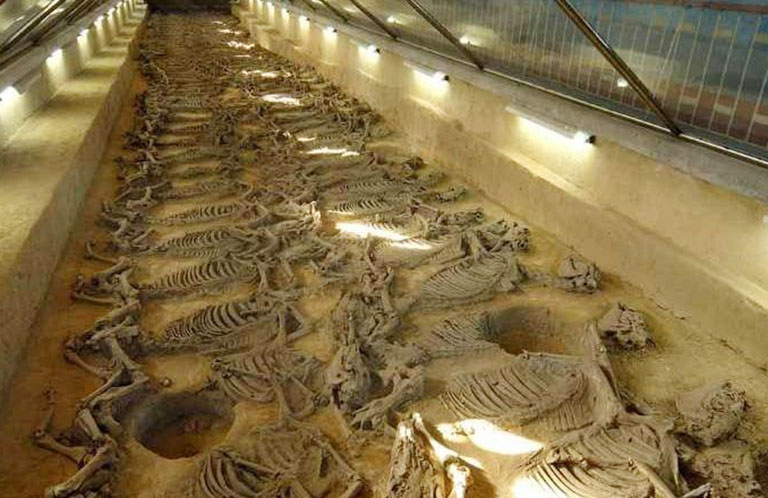
About 13 km from Zibo downtown, Funerary Horses Museum is actually a cemetery for Lords of Qi in Spring and Autumn Period. So far, more than 20 tombs have been found and a massive horse funerary was discovered near the No.5 tomb, about 215 meters long, containing over 600 horses around 3 sides of this cemetery. These horses lie on one side with head up, like they were running in the battle, quite spectacular and impressive.
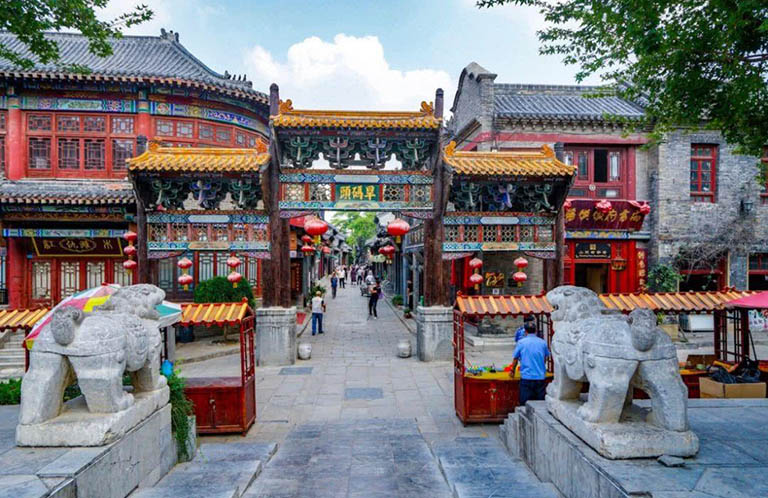
Zhoucun Ancient Town in the west of Zibo, known as the “No.1 Village in Shandong” was a prosperous commercial center for handicrafts like silk in the Ming and Qing Dynasty. Now these historical shops, silk streets, and traditional Chinese architectures are kept in good condition. It has high tourism value and is praised as "the living ancient commercial architecture museum group in China".
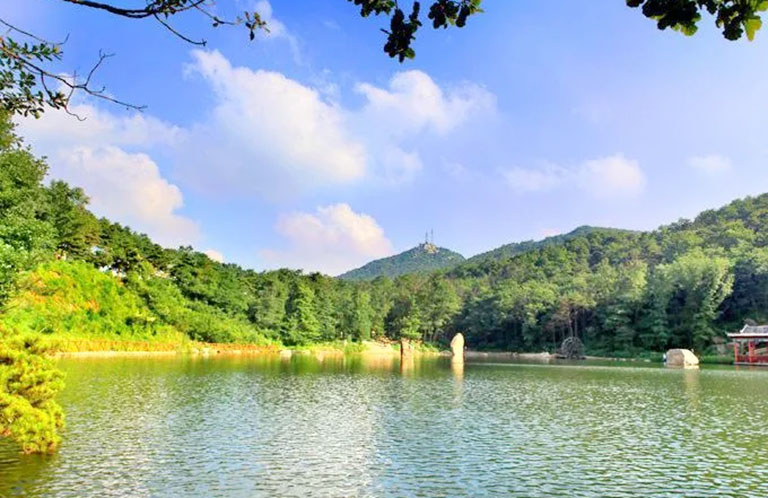
Lushan National Forest Park is located in the south of Zibo. The park has a beautiful environment with waterfalls, springs, and forests. When you come here, you can not only breathe the fresh air, but also go to Tuochan temple, a famous temple for a thousand years, to offer incense and worship the Buddha. You can also climb Guanyun peak, the fourth highest mountain in Shandong, 1108 meters above sea level, to have a broad view.
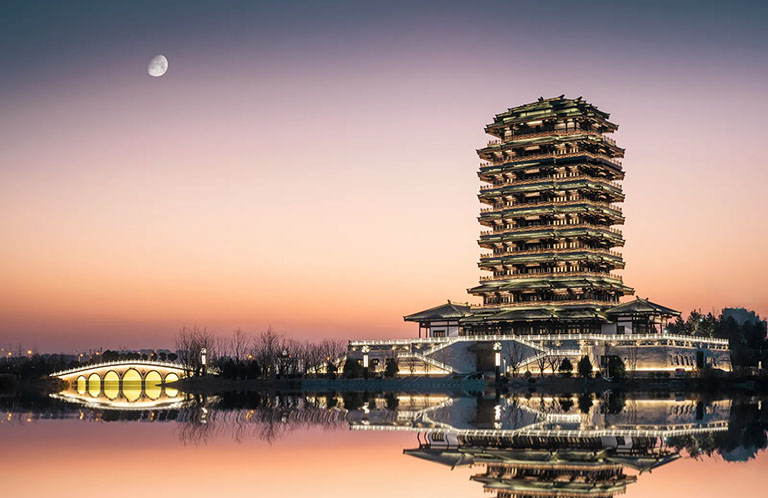
Liaozhai (also called Strange Tales from a Chinese Studio) is a widely-known book in China written by Pu Songling in the Qing Dynasty. Liaozhai City is a large garden scenic spot themed in the stories of Liaozhai. It is also the hometown of Pu Songling. Here you can imagine being in the strange world of the book or just wonder around the beautiful gardens, have a cup of tea and listen to some Chinese folk music.
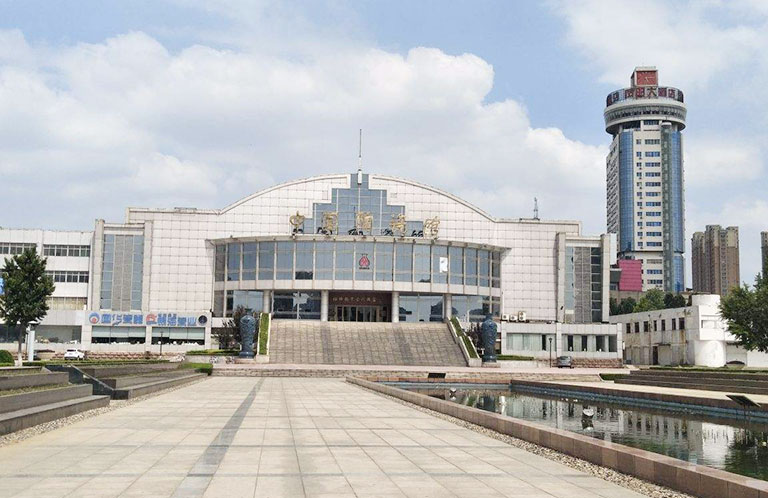
Ceramics are the symbol of Chinese culture. Zibo is one of the five ceramic producing areas in China. The exhibition area of China Ceramics Museum is more than 4000 square meters. It shows more than 2500 pieces (sets), including 249 ancient exhibits, of fine ceramics unearthed, produced and collected in Zibo since the post Li Culture of the Neolithic age 8000 years ago.
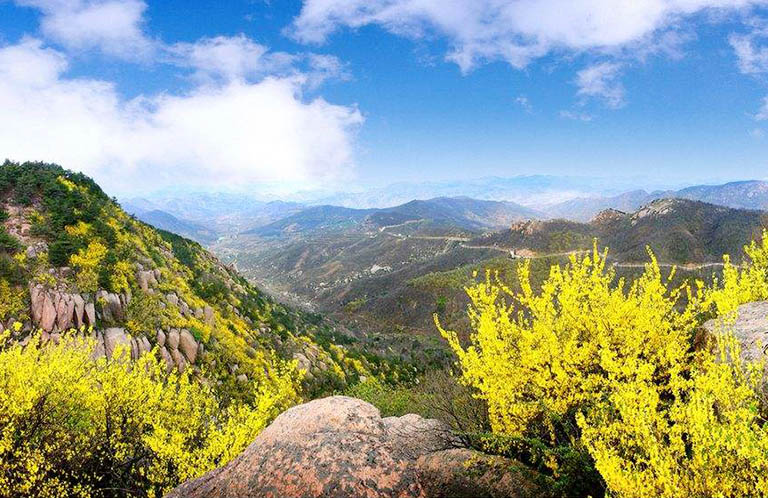
Zibo City is located in the warm temperate zone, which belongs to the semi-humid and semi-arid continental climate (temperate monsoon climate). Its four seasons are characterized by distinct features: spring is windy and dry; summer is hot and rainy; autumn is sunny and doesn’t have much rain; winter is dry, cold and has little snow. The annual average precipitation is 650 mm, the annual average sunshine hours are 2209.3-2523.0 hours, and the annual average frost free period is 190-210 days. Throughout the year, annual average temperature is 12.5 ℃ (54.5 ℉) - 14.2 ℃ (57.56 ℉). The hottest month is July with a temperature of 35 ℃ (95 ℉) and the coldest month is January and it can be as cold as -5 ℃ (23 ℉).
Best Time to Visit Linyi: Famous for its rich cultural sites, Zibo is actually suitable to visit all year round. If you want to visit with a more agreeable weather, the best time would be April to October.
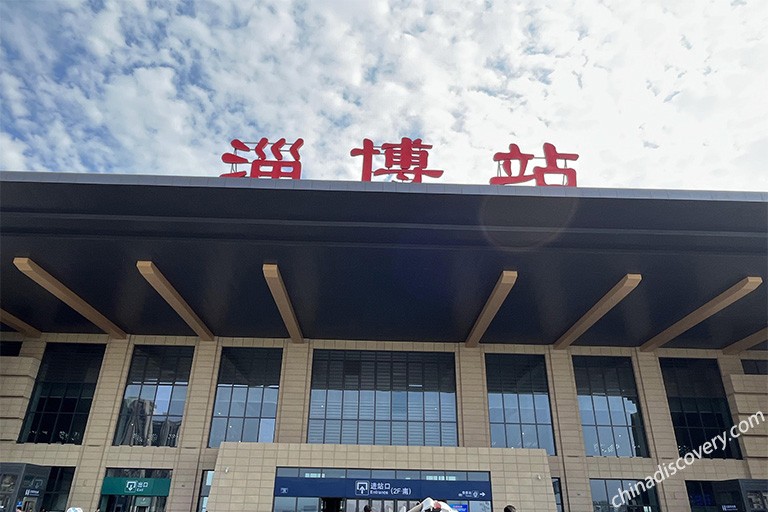
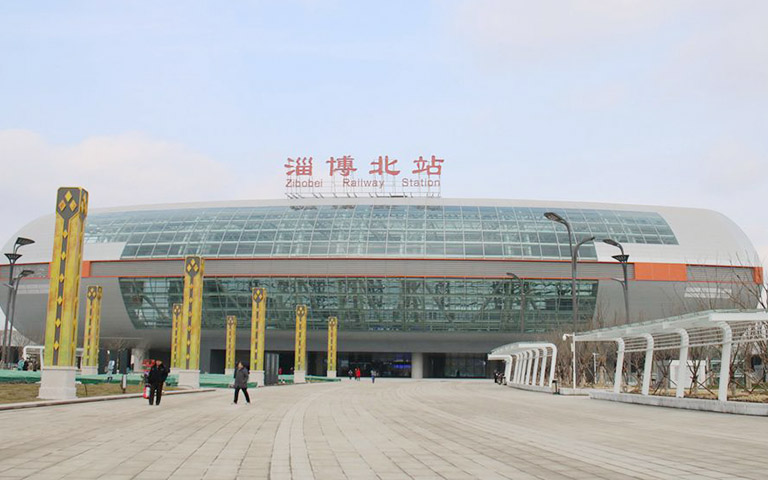
Zibo city is in central Shandong. An airport is under construction now, so travel to Zibo by flight is not available at present. Tourists can get to Zibo by high speed train or normal train from other cities in Shandong and China.
Zibo Railway Station 淄博站 - Both High Speed Train and Normal Train
Location: No. 1 Xingyuan East Road, Zhangdian District, Zibo City 山东省淄博市张店区杏园东路1号, about 4 km, 15 minutes’ drive to Zibo downtown; 33 km, 1 hour’s drive to Qi Dynasty Memorial Museum.
Connected Cities: Beijing (3-9.5h), Xian (7-19.5h), Shanghai (4.5-5.5h), Qingdao (1.5-2.5h), Jinan (1h), Taian (1-5.5h), Qufu (1.5-5.5h), Yantai (2.5-6.5h), etc.
Zibo North Railway Station 淄博北站 - High Speed Train Only
Location: Sibaoshan Street, Zhangdian District, Zibo City 山东省淄博市张店区四宝山街道, about 12 km, 30 minutes’ drive to Zibo downtown; 35 km, 1 hour’s drive to Qi Dynasty Memorial Museum.
Connected Cities: Beijing (2.5-3h), Xian (6.5h), Shanghai (5-5.5h), Qingdao (1-5h), Jinan (0.5-1h), Taian (1.5h), Qufu (1.5-3.5h), Yantai (2-2.5h), etc.
How to Get around Zibo
For independent travellers, if you are visiting attractions far away from downtown such as Qi Dynasty Memorial Museum and Lushan National Forest Park, the most convenient way is by taxi to save you about half the time. If you just want to tour around the city, or go to Zhoucun Ancient Town, Zibo Liaozhai City, etc. taking a bus is also an option when you are not in a hurry. Subway is not available in Zibo now.
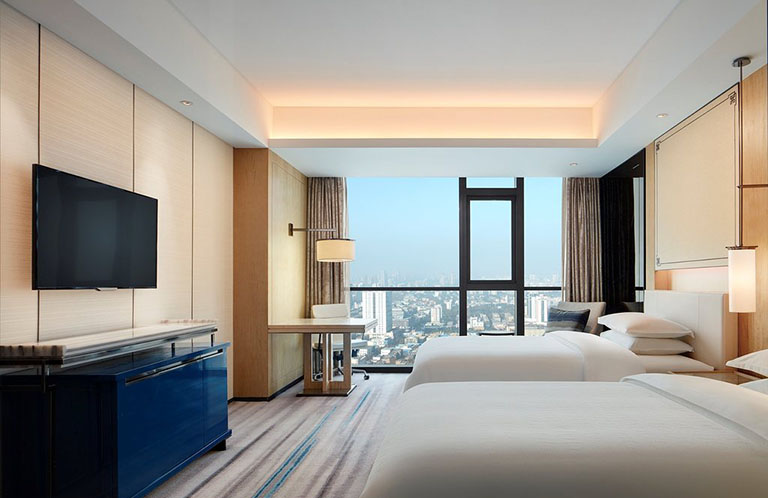
If you are going to spend several days in Zibo, it is most recommended to stay in Zibo downtown near People’s Park. The attractions in Zibo are a little scattered, staying in the downtown area, you will have more convenient transportation to the main sites. What’s more, the large-scale plaza, shopping mall, and food streets most gather here. And the hotels here have more complete facilities and better accommodation environment. To ensure a comfortable stay, 5-star or 4-star hotels are more recommended.
In order to have a more efficient Zibo tour, it is quite important to get a better understanding of Zibo’s location, transportation and attractions distribution. Here we provide some Zibo maps for you, including Zibo China Map, Zibo Shandong Map, Zibo City Map, etc.
Shandong, a coastal province in East China, offers both charming seaside landscape and rich cultural and historical heritages. Except for the ancient capital Zibo, there are much more great destinations in Shandong worth your exploration, including beautiful Qingdao, picturesque Jinan, sacred Mount Tai, honorable birthplace of Confucianism - Qufu, Weifang, fairyland-like Penglai in Yantai, etc. The following are top recommended Shandong destinations to travel with Linyi.
China is vast and diverse. You can choose your favorite destinations among more than 70 tourist destinations and regions, like Beijing, Shanghai, Xian, Chengdu, etc. Following are 4 popular destinations you may be interested in. Check all destinations in China.
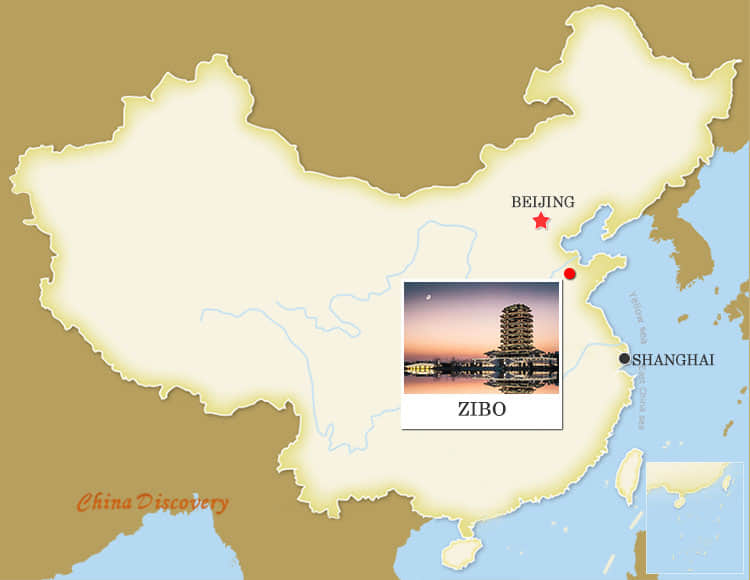
Chinese Name: 淄博
Chinese Pinyin: zī bó
Population: 4,702,000
Language: Mandarin & Zibo Dialect
Tel Code: 0533
Zip Code: 255000
Time Zone: (UTC+8)
Zibo is a low-profile city in Shandong with profound history and culture. It usually needs 2 days to explore the highlights of Zibo. You can spend a day touring around the main attractions such as Qi Dynasty Memorial Museum and Funerary Horses Museum nearby to learn the splendid past of Zibo in the period of Qi State. If you want to go somewhere with natural beauty, you can pay a visit to the mind-refreshing Lushan National Forest Park where you can enjoy both mountain view and waterscape.
On the vast land of Shandong, to extend your Zibo trip, there are many other cities you can explore such as the capital city Jinan, Beer City Qingdao, sacred Mount Tai in Taian, and Confucius’ hometown Qufu, or you can go further to cities outside Shandong Province like Beijing, Xian, Luoyang, and Tianjin.
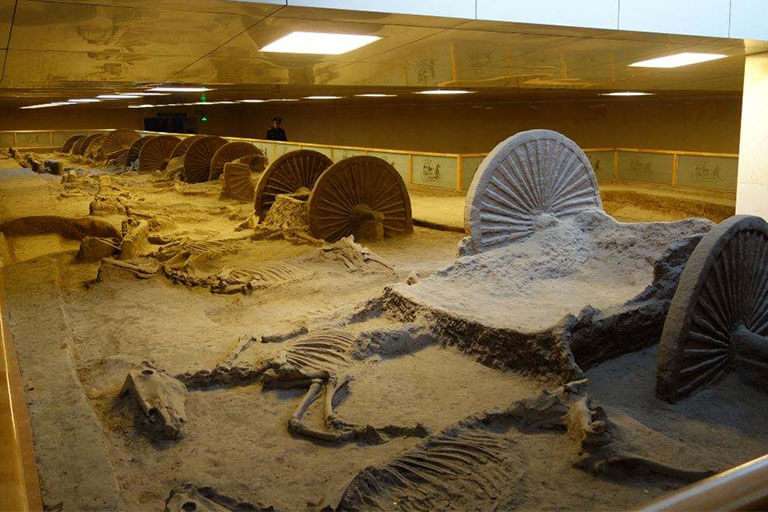
Jinan / Mount Tai / Qufu / Zibo / Weifang / Qingdao
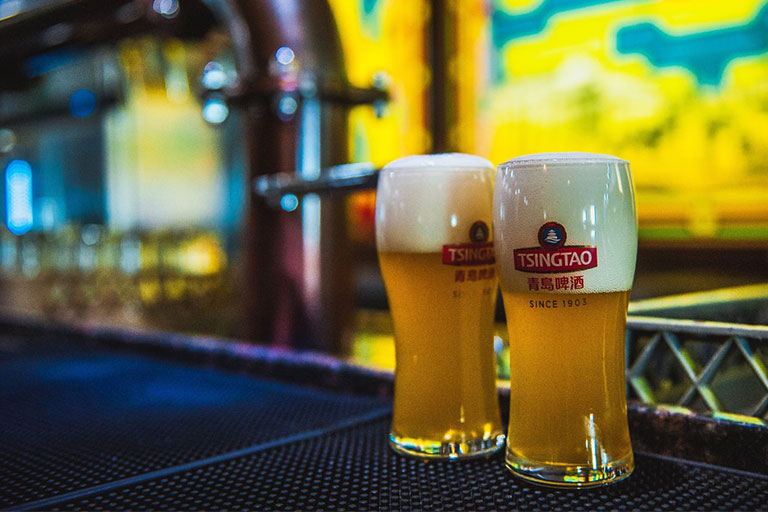
Qingdao / Weihai / Yantai / Penglai / Qingdao

Qingdao / Weihai / Yantai / Weifang / Zibo / Qufu / Mount Tai / Jinan